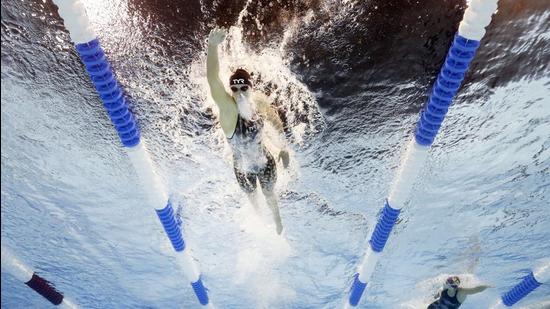Olympics and the art of competitive swimming
What sets the sport apart is the fact that it isn’t just a race against other swimmers, it is a battle with the water that they swim in as well
A hundred and twenty-five years ago, in 1896, a Hungarian named Alfréd Hajós dived into the icy waters of the Bay of Zea, off the coast of Greece, to become the first modern Olympic champion that the world had ever seen. It was the very first modern Olympics; there was no swimming pool; there were no hi-tech walls to track time in milliseconds; and there were no hydrodynamic swimsuits. There was, simply, the swimmer and the open waters of the Athenian sea.

Carrying the misfortune of his father who died from drowning, Hajós conquered the water in a way that no competitive swimmer had done thus far, at the mercy of freezing temperatures and the sea.
Over a century later, the sport has advanced in more ways than one. Mark Spitz, Michael Phelps, Ian Thorpe, Joseph Schooling, Stephanie Rice, and more recently, Caeleb Dressel and Katie Ledecky are household names to many aspiring swimmers who aim to fill their shoes.
As the Tokyo Olympics get underway, swimmers from across the world will dive into the Olympic pool at Tokyo’s Aquatics Centre. The stadium, which can host 15,000 people, will, however, not be open to spectators. Despite fans being a major support system for all sports, once swimmers bend over the block with a firm grip and indomitable spirit, and hear the words “take your mark” followed by a swift whistle, they hit the water, and from that moment right till the end, it’s just the player and the blue. The competitors can’t hear a thing.
As creatures of land, to most human beings, the water is alien — even intimidating. Everything we do, we do on land. So, when the world watched Spitz in the 1970s test the very limits of an athlete in water and then, at the turn of the millennium, Phelps stretch the boundaries of human potential even further, it was extraordinary.
Like most sport, swimming is based on precision movement. Professional swimmers know the exact number of strokes they need to make to give their best time for all the events and every type of stroke — be it freestyle, breaststroke, backstroke or butterfly. However, what sets the sport apart is the fact that it isn’t just a race against other swimmers, it is a battle with the water that they swim in as well.
In that sense, swimming is a curious sport. For every stroke, swimmers make adjustments in technique based on their centre of gravity to ensure buoyancy. Then, they must conjure up the power in their arms and legs to propel them forward and create a rhythm in their movement. However, with every move, they create waves around themselves. These waves help them move forward, but also slow them down. The “drag” (as it is called) impacts the speed of swimmers in water that is said to be nearly 800 times denser than the air. While sport has no enemies, swimming does — and it most certainly is the drag.
Every breath swimmers take has the power to increase their time. Ergo, the fewer breaths they take, the faster they are likely to be. Swimming not only challenges athletes by putting them in unfavourable conditions that are attempting to slow them down, but it also goes against the very function that keeps us alive — breathing.
As a former professional swimmer who represented the then united Andhra Pradesh, I believe that India has a lot to be proud of this year. The country will cheer on Sajan Prakash, Srihari Nataraj, and Maana Patel at the Olympics. It is the first time Indian swimmers (Prakash and Nataraj) have directly qualified for the Games, by achieving the Olympic qualification time (OQT) or the “A” cut. Patel qualified through the universality quota, which allows one male and one female athlete of a country to compete in the Olympics, if no other player of the same gender qualifies.
Tokyo is expected to witness some of the finest swimming ever, as favourites from the United States, Australia and the United Kingdom are set to dominate the Games, but this won’t change the fact that India, now, more than ever before, can make a dent in the sport.
In India, however, swimming isn’t a mainstream sport. An “A” list qualification seemed impossible, until now. Prakash and Nataraj have proved that, in sport, nothing quite is. Breaching goals and eclipsing the past has been taking place consistently since competitive sport began. And India has the potential, and most certainly, the numbers. Nataraj, Patel and Prakash have proved that the underdogs deserve a shot. And as Michael Phelps, the GOAT (greatest of all time), said, “The making of a champion is mostly mental.” India should dive head-first into the sport and invest in it. Great things await us.
marika.gabriel@htdigital.in
The views expressed are personal



